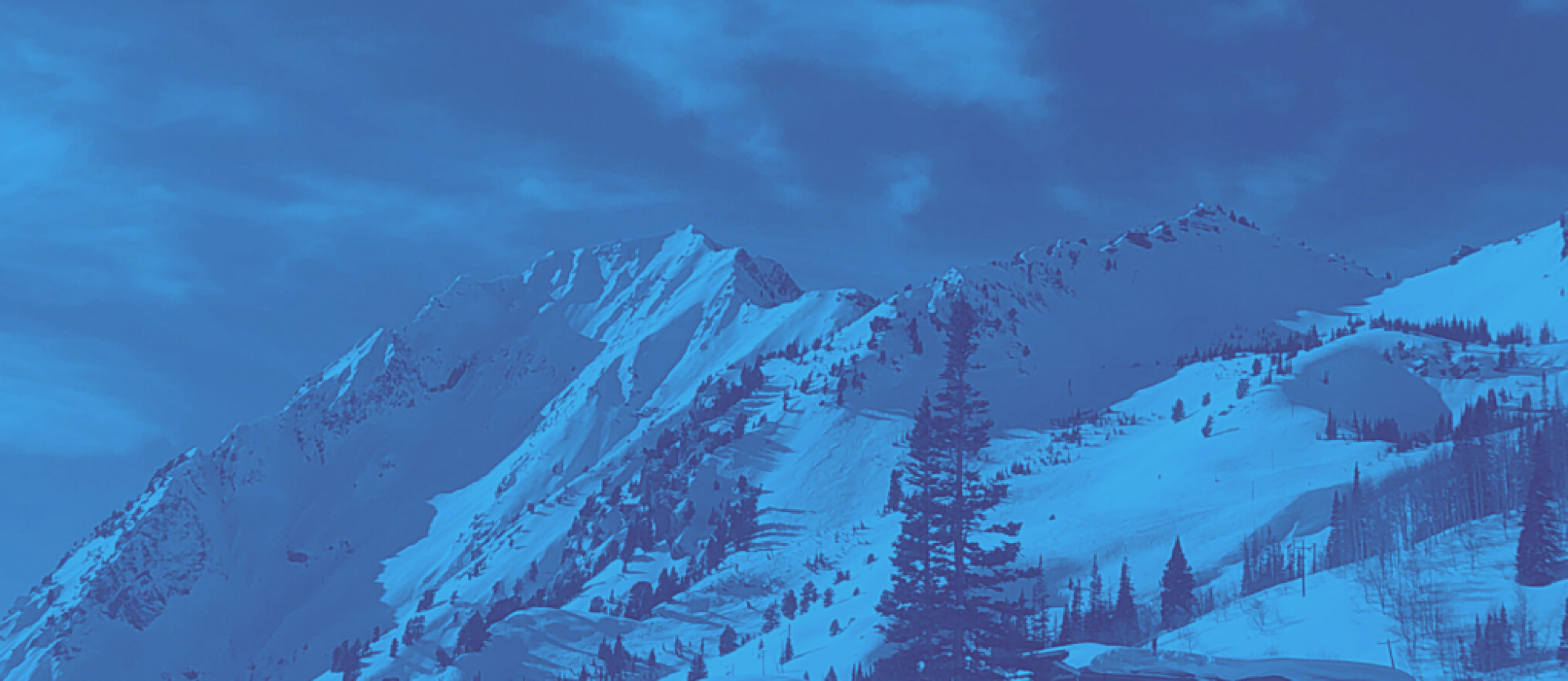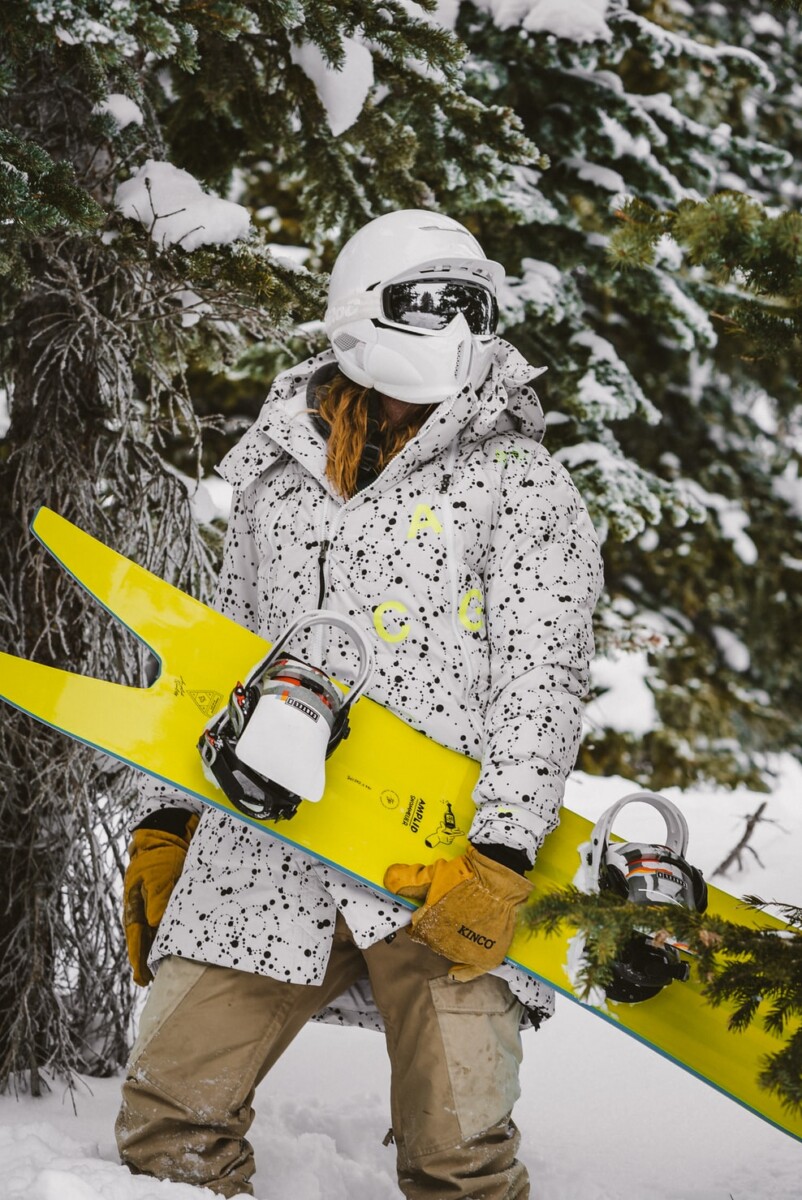Luxury ski wear expanded in America throughout the 2000s, and continues to develop today. During the 2000s, brands created more ski wear, and showcased that through advertisements and celebrity endorsements. Luxury brands including Coco Chanel, Christian Dior, and Prada started designing more ski wear for off the slopes, as well as on the slopes. More ski-centric luxury brands, like Canada Goose and Moncler, catapulted onto the scene with innovative ski wear for on and off the slopes. Celebrities influenced people to buy luxury ski gear through endorsements and street style. Because of the price tag, societal pressure to fit in, and exclusivity of the brands, the luxury ski wear business gained more money and popularity.
ADVERTISEMENTS AND MARKETING
So, what led to this increased interest in ski wear? Why are people now wearing these pieces on the streets? Through new and fresh advertisements, luxury ski wear brands attracted a wider audience.
Through magazines, brands show off their newest items to the public. Sports Illustrated features many celebrities wearing luxury ski gear on their covers. Even before the 2000s, they featured ski gear on their cover story, “The New American Look in Ski Clothes,” which attracted more people to buy ski wear (Ackerman). Magazines feature ski wear on their covers now more than ever. Elle China photographed model Xiao Wen Ju wearing luxury ski gear in their February 2022 issue. Some magazines have recently turned to photographing famous skiers and snowboarders, instead of non-athletes, to show off luxury ski brands. Harper’s Bazaar China captured Eileen Gu, famed freestyle skier and two-time Olympic gold medalist, for their cover in April 2022.
Another successful advertising technique is to use videos featuring famous skiers and snowboarders. In March 2021, Prada teamed up with Gus Kenworthy and Julia Marino. They “[came] together to showcase the Prada Linea Rossa ski collection” (Ridzwan). The video shows the two athletes competing while wearing the newest luxury line of ski wear.
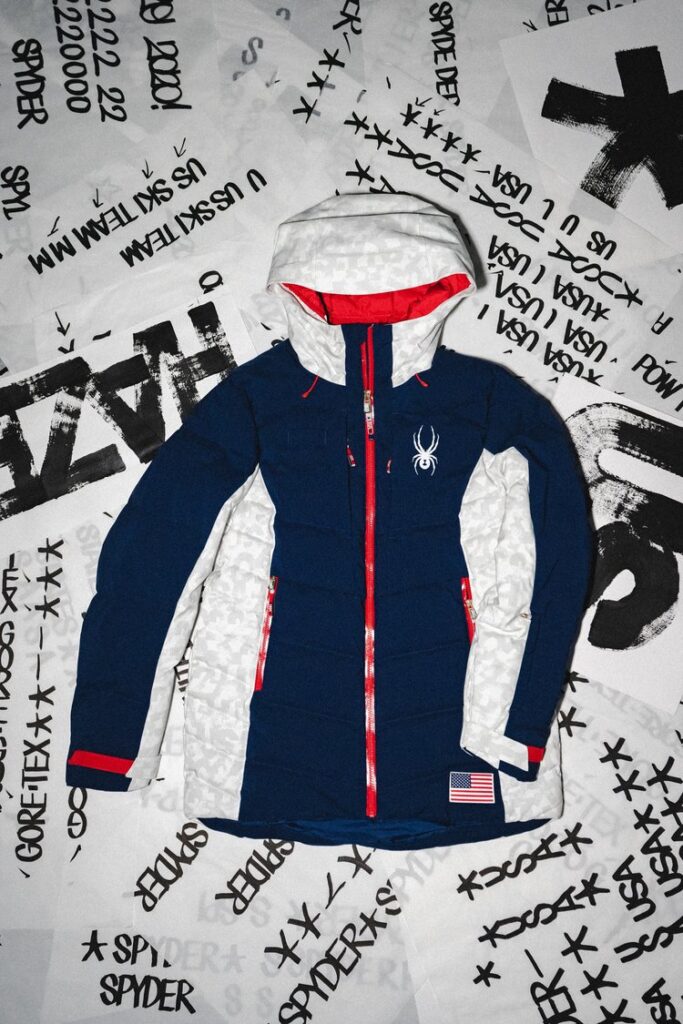
Reproduced with permission from Spyder Active Sports, Eric Haze, & the Colorado Snowsports Museum .
CELEBRITY CULTURE
The rise of social media and paparazzi contributed to celebrity culture. As it became easier for people to see celebrities’ outfits every day, they also became influenced to buy those outfits. In the early 2000s, heiress Paris Hilton was photographed on the ski slopes wearing luxury brands. Throughout the 2010s, the Kardashian-Jenner family posted pictures of them skiing on their social media accounts. In the 2020s, models like the Hadid sisters influence people to buy and wear luxury ski gear.
ECONOMY
In the 2000s, the economy fluctuated. In 2018, the “median income of U.S. households stood at $74,600” (Pew Research Center 2020). This income was higher than ever before, allowing households with disposable income to spend money on expensive or luxury goods. “From 1971 to 2019, the share of adults in the upper-income tier increased from 14% to 20%… there was more movement up the income ladder than down the income ladder” (Pew Research Center 2020). This change in household income meant there was a larger upper class that had extra money to spend on luxury clothes and logos. As more expensive luxury ski resorts opened, people felt pressured to keep up in terms of clothing and ski wear. This has been a trend since before the 2000s, as alpine skiing and European style resorts filled with the upper or middle classes showing off their money and style.
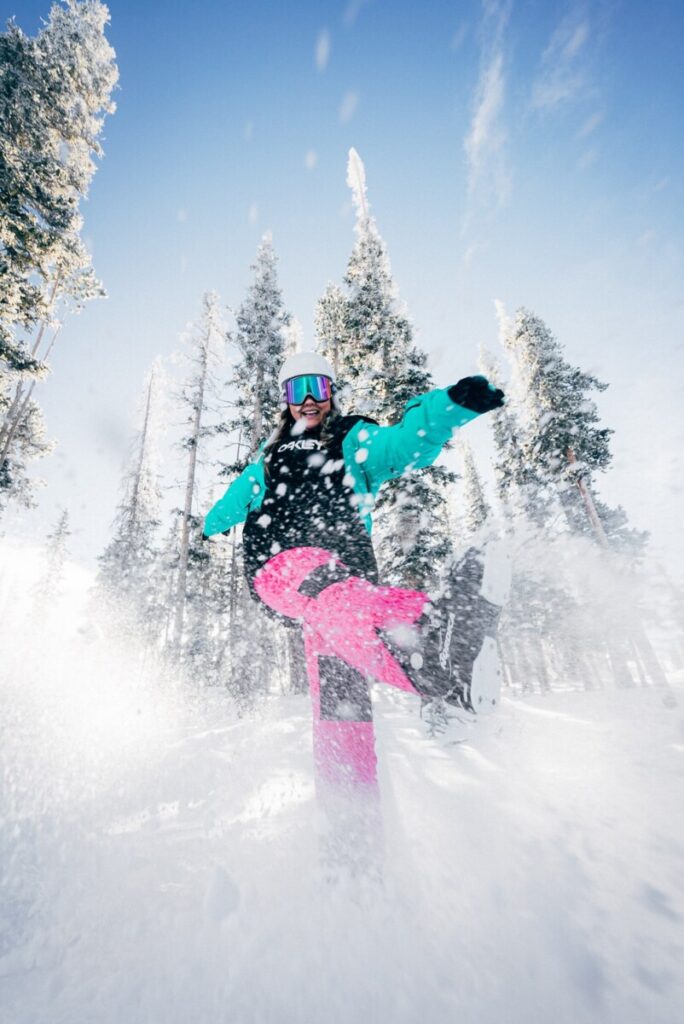
Free to use under the Unsplash License.
Covid-19 helped the luxury ski wear business gain revenue. In 2021, wealthy Americans began spending their money on expensive, luxury items. This spending helped the economy grow: “Nearly 40 percent of overall consumer spending comes from the top fifth of earners” (Van Dam and Long). When people could no longer use their disposable income on outdoor experiences (eating, traveling, movies) they turned to online shopping (Achille and Zipser). Only being able to connect through social media also led to increased pressures to show off. Through apps like Instagram, people want to show off their style and money. Peer pressure helps keep the ski fashion business booming.
Many people continued to solely shop online into 2021 or 2022, meaning these brands still benefit from a huge increase in sales. At the beginning of the pandemic, there was a “surge” in online shopping. In 2021, “Consumers spent $870.78 billion online with U.S. merchants last year, up from $762.68 billion in 2020” (Young). The upper class directly affected e-commerce sales: “People in more affluent households were more likely to increase their online shopping: More than one-third of households with incomes over $125,000 increased their online shopping” (Ecola, Lu, and Rohr). Brands used flashy advertisements and new concepts for clothes to catch people’s attention during a lonely time, and it worked. The ski wear economy was directly affected by the changes in the U.S. economy. In 2019, “skiwear sales contributed a substantial USD $11.3 billion to the US economy” (Cammareri). And in early 2022, Prada reported it earned “8% more … than pre-pandemic sales in 2019” (Chabot).
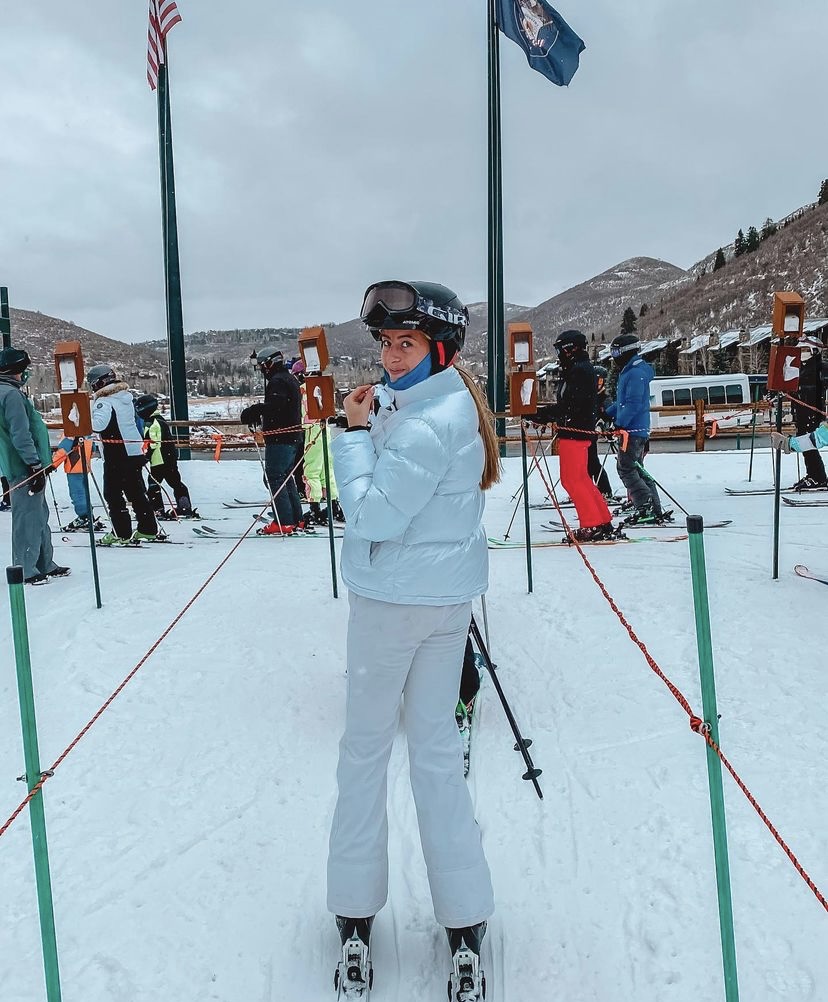
Reproduced with permission from Claire Kane.
https://www.instagram.com/p/CJesCljp5wo/
LOGOMANIA
How did the logo-centric fashion world affect the ski wear business?
As one journalist pointed out when Dior’s first ski collection came out, “You can slap a logo on a t-shirt and it will most likely sell out” (Clark). In November 2020, Dior released “a collaboration with POC Sports, a Swedish brand that can deliver the finest technical sportswear” (Cook). This collection, including goggles and a helmet, became so popular that it is still sold today. Dior then began releasing more ski items that could be worn on the streets instead of on the slopes. Their “DIORALPS collection … [featured] … everything you would need from skiing to the après ski and even covering you for the flight” (Cook). This collection, released in September 2021, became wildly successful, as many celebrities were spotted wearing it. Other brands, like Fendi and Prada, also plaster their ski wear with logos. This makes it clear that these pieces belong to certain brands. There is no mistaking their logos for another brand. The logo also adds to the exclusivity. No one wants to miss out on this trend, so they rush out to buy this gear.
BRAND COMPETITION
When luxury brands saw there was a space for them to create ski wear, they started to focus on designing more ski pieces. Why would brands design ski wear, instead of other snow sports? Skiing “is one of the world’s most favorable pastimes” (Cook). Fendi started a ski wear line in 2016 and Chanel in 2018 (Cammareri). Prada began selling ski wear in the late 1990s, and has since expanded to sustainable ski gear as well. In fact, the brand “signed a five-year-long green loan” (De Leon). That loan means “that interest rates can be adjusted annually if Prada meets certain sustainability-linked targets” (Pauly). This is another effective way to get more people to buy their ski gear, while making (and saving) more money as a company. Prada also teamed up with AspenX, a brand under the Aspen Skiing Company. They “offer rental equipment, food, and wine experiences for both on- and off- mountain occasions” (Simms). This allowed skiers to become more invested in these luxury pieces. Prada became one of the most successful brands in the luxury ski business. Madison Semarjian, the founder of shopping app Mada, said, “The 2022 look is elevated loungewear you can wear in the cold. Skiwear has become the ‘it’ girl uniform, even for people who don’t ski” (Manoff). During the pandemic, people turned to more comfortable outfits as they stayed home. Even as more stores or restaurants open back up, consumers continue to wear athleisure, sweat suits, and ski wear instead of less comfortable items. Even non-skiers want to be seen wearing ski wear in order to fit in and to be more comfortable in an uncomfortable time.
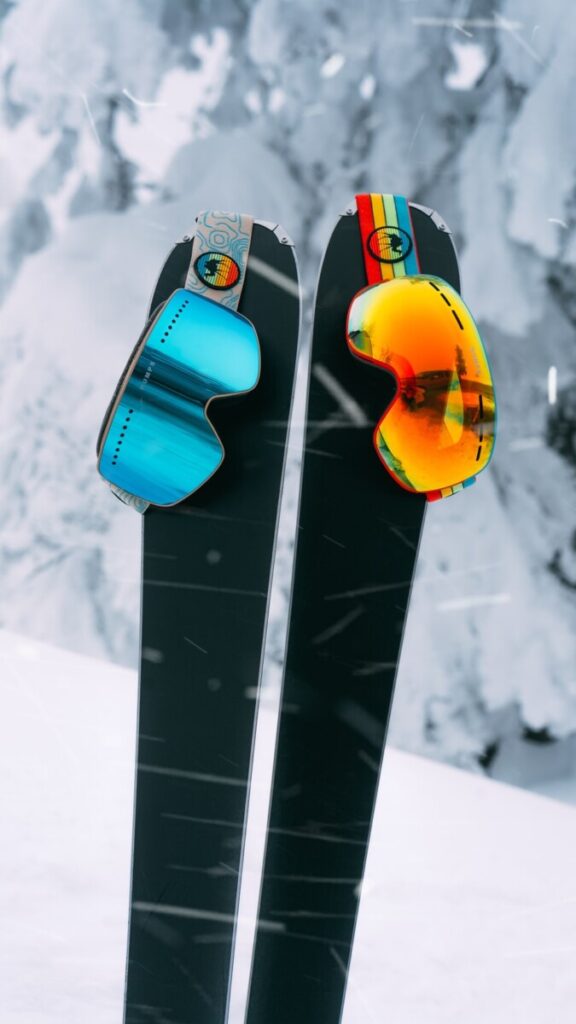
Free to use under the Unsplash License.
Chanel is another brand that successfully markets ski wear and advertises based on trends. In 2021, they created snowsuits and a collection that mixed “two influences: the ambiance of ski holidays… and a certain idea of cool Parisian chic” (Huber). Chanel even designed a snowsuit made out of their traditional tweed. A brand that relies on tradition and classiness, they successfully make pieces that trend on social media and pieces that hold true to their original brand. In fact, “Kylie Jenner, Sophie Turner, and Winnie Harlow posted photos of themselves” wearing Chanel snowsuits (Huber). Another way Chanel helped luxury ski wear brands survive the pandemic was through runway shows. In March of 2021, they could not have a traditional in-person show, so they filmed the show instead. Juxtaposing their usual tweed outfits with a dance floor, “The ski theme infused looks throughout, from knitted jumpers with snowflake motifs to the woolen beanie hats… adorned with camellias, another Chanel emblem” (South China Morning Post). This infusion of old versus new allowed the brand to remain true to their start while attracting a new audience.
Christian Dior created their first ski wear capsule in 2020. They made sure to collaborate with “premium ski manufacturers and brands” (Clark). Similarly to Prada, they made this collection ethically, with “Nylon” and “ethically-sourced feathers” (Clark).
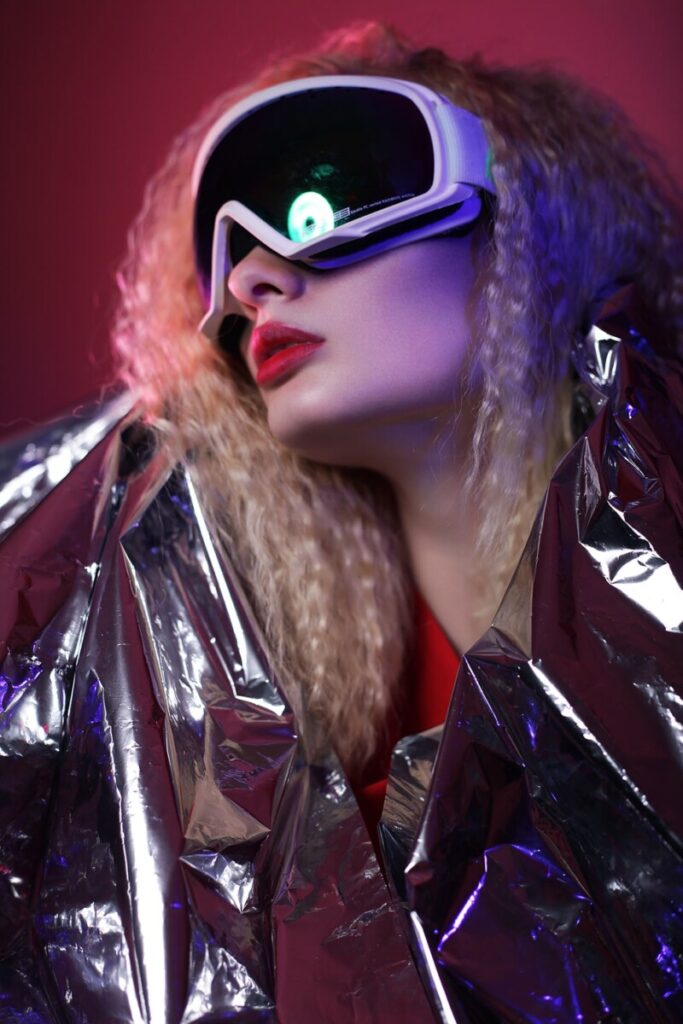
Free to use under the Unsplash License.
Luxury brands have had better luck getting people to buy some pieces rather than others. While Moon Boots had its moment, other boots, such as Chanel’s or Dior’s, were mainly seen on celebrities. However, ski headbands and coats are much more popular. After Kylie and Kendall Jenner were seen in Prada puffers, the piece blew up on Instagram (Slope Style is the New Street Style). Earmuffs became popular again after Kylie Jenner posted wearing Chanel earmuffs.
WHY AMERICA
Logos, luxury brands, and ski gear as street style rather than practical clothes are most prevalent in America. Americans are more focused on logos rather than classier, or understated luxury clothes than Europeans.
At the Veuve Clicquot shack in Aspen, people are spotted wearing luxury gear. In order to enter, you have to ski or snowboard in.
The constant need for competition in America also shows why struggling to keep up and buying expensive luxury goods would be more prevalent. In Lake Tahoe, businesses expanded ski villages. However, these hurt or “[destroy] local Tahoe culture” (Valle). Companies ignore the needs of citizens and locals, instead opting to spend money expanding large corporations that potentially damage the local environment.
Americans have a reputation of wearing more casual clothes (athleisure) than other countries. It makes sense that, if they were buying luxury goods, they would buy something they could wear often, rather than something expensive they could never use. This more comfortable style influenced European brands to design ski wear that was similarly comfortable. Because Americans were spending more money on clothes and online shopping, these brands knew they could attract more consumers and make more money (Pew Research Center 2020).
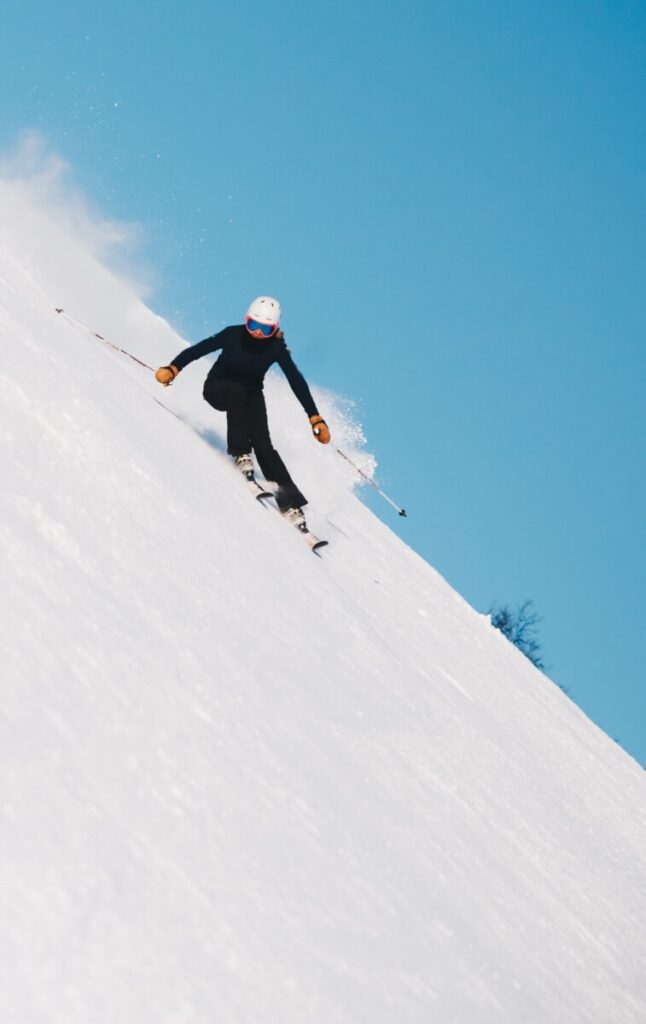
Free to use under Unsplash License.
THE FUTURE OF LUXURY SKI
The presence of social media and the impact of celebrities may have led to booming businesses of ski gear, but how will fashion houses maintain that success? With more social media applications being created, people will keep being influenced by celebrities. Apps like TikTok and Pinterest allow people to see every aspect of celebrities’ lives. Paparazzi such as Hollywood Fix post YouTube videos, allowing people to see their whole outfits. Brands also are becoming more innovative in order to keep people’s attention. Moncler started “Genius Collections”, where they feature eight designers in order to keep the designs new and fresh (Sinclair Scott). Kylie Jenner also wore a piece from one of the Genius Collections, a white fringed jumpsuit (“Kylie Jenner Makes the Case for High Fashion Gear”).
In the 1990s, Barbie released a ski wear line, which successfully introduced a younger audience to ski wear. Today, brands could collaborate with Barbie or another doll line to make tiny luxury ski outfits.
Thank you to everyone who helped me with this project and gave me permission to use their work. Thank you to the entire Colorado Snowsports Museum, including Dana Mathios, for all of their help. Thank you to Claire Kane for allowing me to use your image.
Works Cited:
Ackerman, Louise M. “The Use of ‘Look’ in the Language of Fashion.” American Speech, vol. 34, no. 2, 1959, pp. 147–48, https://doi.org/10.2307/454387.
Allaire, Christian. “Going Skiing? Kylie Jenner Makes the Case for High-Fashion Gear.” Vogue. Vogue, December 9, 2019. https://www.vogue.com/vogueworld/article/kylie-jenner-high-fashion-ski-gear.
Allaire, Christian. “Slope Style Is the New Street Style.” Vogue. Vogue, January 4, 2021. https://www.vogue.com/article/ski-slope-style-bella-hadid-kendall-kylie-jenner.
Aspers, Patrik, and Frédéric Godart. “Sociology of Fashion: Order and Change.” Annual Review of Sociology, vol. 39, 2013, pp. 171–92, http://www.jstor.org/stable/43049631.
Blanchard, Mary W. “Boundaries and the Victorian Body: Aesthetic Fashion in Gilded Age America.” The American Historical Review, vol. 100, no. 1, 1995, pp. 21–50, https://doi.org/10.2307/2167982
Chabot, Hillary. “Why Luxury Goods Sales Are Surging in the Pandemic.” News @ Northeastern. https://news.northeastern.edu/2022/01/26/luxury-spending-surge-during-pandemic/.
Clemente, Deirdre, and Zócalo Public Square. “Fashion: Why and When Did Americans Begin to Dress so Casually?” Time. Time, August 5, 2015. https://time.com/3984690/american-casual-dressing/.
Coleman, Annie Gilbert. Ski Style: Sport and Culture in the Rockies. Lawrence, Kan.: University Press of Kansas, 2004.
Cook, Jack. “Why Luxury Fashion Is Obsessed with Skiing.” CULTED, 18 Dec. 2021, culted.com/why-luxury-fashion-is-obsessed-with-skiing/.
Dam, Andrew Van, and Heather Long. “The Post-Covid Luxury Spending Boom Has Begun. It’s Already Reshaping the Economy.” The Washington Post, WP Company, 25 June 2021, www.washingtonpost.com/business/2021/06/18/luxury-boom-recovery/.
Ecola, Liisa, et al. “Online Shopping: Many Americans’ Habits Haven’t Changed during COVID-19.” RAND Corporation, 7 July 2020, www.rand.org/pubs/research_reports/RRA308-6.html.
“Fashion Briefing: ‘Prada Ski or Nada Ski’: How Skiwear Became the ‘It’ Girl Uniform.” Glossy. https://www.glossy.co/fashion/fashion-briefing-prada-ski-or-nada-ski-how-skiwear-became-the-it-girl-uniform/.
Holbrook, Morris B., and Elizabeth C. Hirschman. “The Experiential Aspects of Consumption: Consumer Fantasies, Feelings, and Fun.” Journal of Consumer Research, vol. 9, no. 2,
Horowitz, Juliana Menasce, et al. “1. Trends in Income and Wealth Inequality.” Pew Research Center’s Social & Demographic Trends Project, Pew Research Center, 17 Aug. 2020, www.pewresearch.org/social-trends/2020/01/09/trends-in-income-and-wealth-inequality/.
“How Did Chanel Recreate a Ski Holiday for Paris Fashion Week?” South China Morning Post. https://www.scmp.com/magazines/style/luxury/article/3125207/why-did-chanel-recreate-ski-holiday-paris-fashion-week.
Huber, Eliza. “The Snowsuit Trend Just Got Chanel’s Stamp of Approval.” Chanel Gave Snowsuits Its Stamp Of Approval For FW21. https://www.refinery29.com/en-us/2021/03/10354246/chanel-snowsuit-trend-fall-winter-2021-collection.
Leon, Pauline De. “Hit the Slopes in Prada’s Sustainable Ski Jackets.” HYPEBAE. HYPEBAE, December 16, 2021. https://hypebae.com/2021/12/prada-aspenx-skiwear-collaboration-outerwear-jackets-sustainable-release-date.
“The Lost Decade of the Middle Class.” Pew Research Center’s Social & Demographic Trends Project, Pew Research Center, 30 May 2020, www.pewresearch.org/social-trends/2012/08/22/the-lost-decade-of-the-middle-class/.
“Luxury Ski Wear 2021: Moncler, Louis Vuitton, Prada & More.” LUXUO. https://www.luxuo.com/style/fashion/luxury-ski-wear-2021-moncler-louis-vuitton-fendi-prada.html.
Lynge-Jorlen, Ane. Niche Fashion Magazines: Changing the Shape of Fashion. I.B. Tauris & Co. Ltd, 2017.
Mair, Carolyn. The Psychology of Fashion. Routledge, 2018 “Make No Mistake, Dior’s Ski Capsule Was Made to Shred the Gnar.” ICON. https://icon.ink/articles/dior-ski-capsule-news/.
March, Izzy Cammareri — 14. “Ordre.” ORDRE. https://www.ordre.com/en/news/why-ski-season-is-big-business-for-luxury-1136.
Matthews, Lyndsey. “Who Wears It Well? the Best in Après-Ski Outfits.” AFAR. AFAR, July 12, 2021. https://www.afar.com/magazine/apres-ski-attire-around-the-world.
Pauly, Alexandra. “Prada Pledges Sustainability by Becoming First Fashion Leader to Sign ‘Green’ Loan.” HYPEBAE. HYPEBAE, November 7, 2019. https://hypebae.com/2019/11/prada-signs-sustainability-loan-credit-agricole-group-re-nylon-fur-initiative.
Person. “This Aspen Ski Shack Will Shower You in $125 Champagne.” VinePair. https://vinepair.com/articles/cloud nine-veuve-clicquot/.
A Perspective for the Luxury-Goods Industry during … – McKinsey & Company. www.mckinsey.com/~/media/McKinsey/Industries/Retail/Our%20Insights/A%20perspective%20for%20the%20luxury%20goods%20industry%20during%20and%20after%20coronavirus/A-perspective-for-the-luxury-goods-industry-during-and-after-coronavirus.pdf.
Poplin, Carson. “Fashion History Lesson: The Origins, and Explosive Growth, of Athleisure.” Fashionista. Fashionista, January 13, 2020. https://fashionista.com/2020/01/the-history-of-athleisure.
Scott, Fiona Sinclair. “Moncler Genius: One Luxury Skiwear Brand’s Mission to Reinvent the Model.” CNN. Cable News Network, February 21, 2019. https://www.cnn.com/style/article/moncler-genius/index.html.
Simms, Demetrius. “Prada Teams up with Aspenx for a Stylish New Line of High-Performance Ski Gear.” Robb Report. Robb Report, December 17, 2021. https://robbreport.com/style/menswear/prada-and-aspenx-unveil-new-collection-of-skiwear-1234654022/.
Study: Hope for US Boost Pushes Global Luxury Goods Recovery. www.usnews.com/news/business/articles/2021-05-17/study-hope-for-us-boost-pushes-global-luxury-goods-recovery.
Valle, Gabriel R. “Lake Tahoe Development Creates ‘Poverty with a View.’” Race, Poverty & the Environment, vol. 18, no. 1, 2011, pp. 68–69, http://www.jstor.org/stable/41555319.
Venkatesh, Alladi, et al. “The Aesthetics of Luxury Fashion, Body and Identify Formation.” Journal of Consumer Psychology, vol. 20, no. 4, 2010, pp. 459–70, http://www.jstor.org/stable/20778662.
White, Nicola. Reconstructing Italian Fashion: America and the Development of the Italian Fashion Industry. Berg, 2000.
Xavier, Francis. “Did You Know Prada Made Snow Gear?” Unofficial Networks. https://unofficialnetworks.com/2021/11/18/did-you-know-prada-made-snow-gear/.
Young, Jessica. “US Ecommerce Grows 14.2% in 2021.” Digital Commerce 360. www.digitalcommerce360.com/article/us-ecommerce-sales/.
